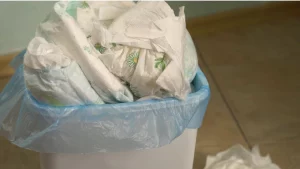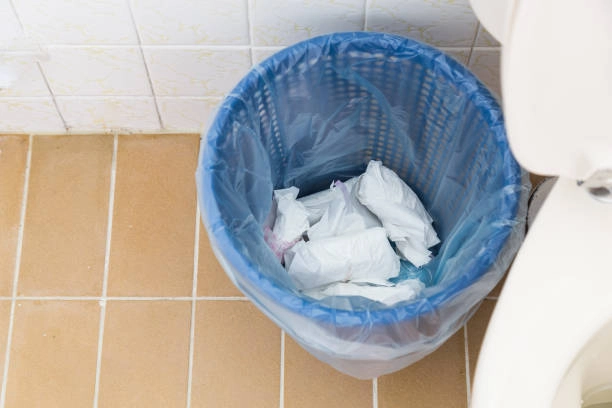Full bleed napkins represent a significant advancement in sustainable dining practices. By maximizing print coverage and utilizing materials that are often recycled or compostable, these napkins minimize waste while enhancing aesthetic appeal. Their design not only elevates the dining experience but also aligns with eco-conscious values that many consumers prioritize today. As businesses increasingly seek to reduce their environmental footprint, the adoption of full bleed napkins could be a pivotal step in their sustainability journey. What implications does this shift hold for the industry?
Key Takeaways
- Full bleed napkins maximize print coverage, enhancing visual appeal while using less material, contributing to waste reduction.
- They can be made from recycled materials and are often compostable, supporting sustainable practices.
- Their efficient design results in lower resource consumption per use, minimizing environmental impact.
- Transitioning to full bleed napkins signals a commitment to sustainability, attracting environmentally conscious consumers.
- By promoting a circular economy, full bleed napkins reduce landfill contributions and foster a sense of community engagement.
Understanding Full Bleed Napkins and Their Design
Full bleed napkins represent a significant innovation in the world of dining accessories, blending practicality with aesthetic appeal. What are full bleed napkins? They are elegantly designed napkins that feature a print extending to the very edges, ensuring a visual impact that enhances the dining experience. These napkins not only serve their functional purpose but also elevate the ambiance of any gathering, making them perfect for both casual and formal occasions. Crafted with high-quality materials, full bleed napkins allow hosts to express their unique style and create a sense of belonging among guests. By integrating sophisticated designs with utility, these napkins cater to the growing desire for personalized dining experiences, ensuring every meal feels special and memorable.
The Environmental Impact of Traditional Napkins
While traditional napkins serve a practical purpose at dining tables, their production and disposal often have significant environmental consequences. Typically made from paper, they contribute to deforestation, as vast amounts of trees are cut down to fulfill demand. Additionally, the manufacturing process consumes considerable water and energy, exacerbating resource depletion. Once used, traditional napkins often end up in landfills, where they generate methane, a potent greenhouse gas. The reliance on single-use items perpetuates a cycle of waste that can alienate conscientious consumers seeking sustainable alternatives. As awareness of environmental issues grows, the shift towards more sustainable options, such as full bleed napkins, becomes increasingly essential for fostering community values that prioritize ecological responsibility and collective well-being.

How Full Bleed Napkins Reduce Waste
As consumers increasingly seek eco-friendly alternatives, full bleed napkins emerge as a practical solution that considerably reduces waste. These napkins are designed to maximize print coverage, allowing for visually appealing designs that can enhance the dining experience while minimizing material use. Unlike traditional napkins, which often end up in landfills, full bleed napkins can be made from recycled materials and are often compostable, promoting a circular economy. Their efficient design means that less paper is needed per use, translating to fewer resources consumed. By choosing full bleed napkins, businesses and households alike can contribute to a more sustainable future, fostering a sense of community among those committed to reducing waste and embracing environmentally responsible practices.
Benefits of Using Full Bleed Napkins in Various Settings
Napkins play an essential role in various dining settings, and the introduction of full bleed napkins brings numerous benefits that elevate both functionality and aesthetics. These napkins, designed to feature vibrant, edge-to-edge designs, enhance the overall dining experience by adding a touch of sophistication. In restaurants, full bleed napkins can reflect a brand’s identity, fostering a sense of belonging among patrons who appreciate attention to detail. Moreover, they are versatile, suitable for casual gatherings or formal events, adapting seamlessly to different atmospheres. By utilizing full bleed napkins, establishments not only improve their visual appeal but also promote sustainability, as they are often made from eco-friendly materials. This dual benefit resonates with consumers who value both style and environmental responsibility.
Making the Switch: Incorporating Full Bleed Napkins Into Your Business
Incorporating full bleed napkins into a business can be a transformative decision that not only enhances the dining experience but also aligns with sustainable practices. By making this switch, establishments signal their commitment to environmental responsibility, fostering a sense of belonging among eco-conscious patrons. Full bleed napkins, designed to maximize print space, can showcase branding and messages that resonate with customers, reinforcing loyalty. Shifting to these napkins involves evaluating suppliers and ensuring compatibility with existing systems, but the benefits far outweigh the initial adjustments. As businesses embrace full bleed napkins, they not only reduce waste and promote sustainability but also create an inviting atmosphere that encourages community engagement and shared values among guests.
Frequently Asked Questions
What Are Full Bleed Napkins Made From?
Full bleed napkins are typically made from high-quality paper or biodegradable materials. These materials allow for vibrant printing across the entire surface, enhancing both aesthetics and functionality in dining experiences while promoting eco-friendly practices.
Are Full Bleed Napkins Compostable?
Yes, full bleed napkins are typically compostable, depending on their material composition. This eco-friendly feature allows users to contribute positively to environmental sustainability, promoting a sense of belonging to a community that values responsible consumption.
How Do Full Bleed Napkins Compare in Cost to Traditional Napkins?
Full bleed napkins generally have a slightly higher cost than traditional napkins due to their printing and design capabilities. However, their unique aesthetic and eco-friendly benefits can justify the investment for environmentally conscious consumers.
Can Full Bleed Napkins Be Customized for Events?
Yes, full bleed napkins can be customized for events. Their design flexibility allows for unique branding, colors, and artwork, ensuring a memorable experience that enhances the event’s theme and fosters a sense of belonging among attendees.
Where Can I Purchase Full Bleed Napkins in Bulk?
Full bleed napkins can be purchased in bulk from various online retailers, specialty printing companies, and event supply stores. These options provide an opportunity to customize designs, ensuring a unique touch for any occasion.
Conclusion
In summary, full bleed napkins represent a significant advancement in sustainable dining practices. By maximizing print coverage and utilizing recycled materials, they not only enhance the aesthetic appeal of dining experiences but also actively contribute to waste reduction and environmental preservation. Businesses that embrace these eco-friendly alternatives can strengthen their commitment to sustainability while attracting environmentally conscious consumers. Shifting to full bleed napkins is a strategic choice that aligns style with responsibility, fostering a community dedicated to a greener future.
Also Read: Energy Efficiency for Luxury Villa Features





